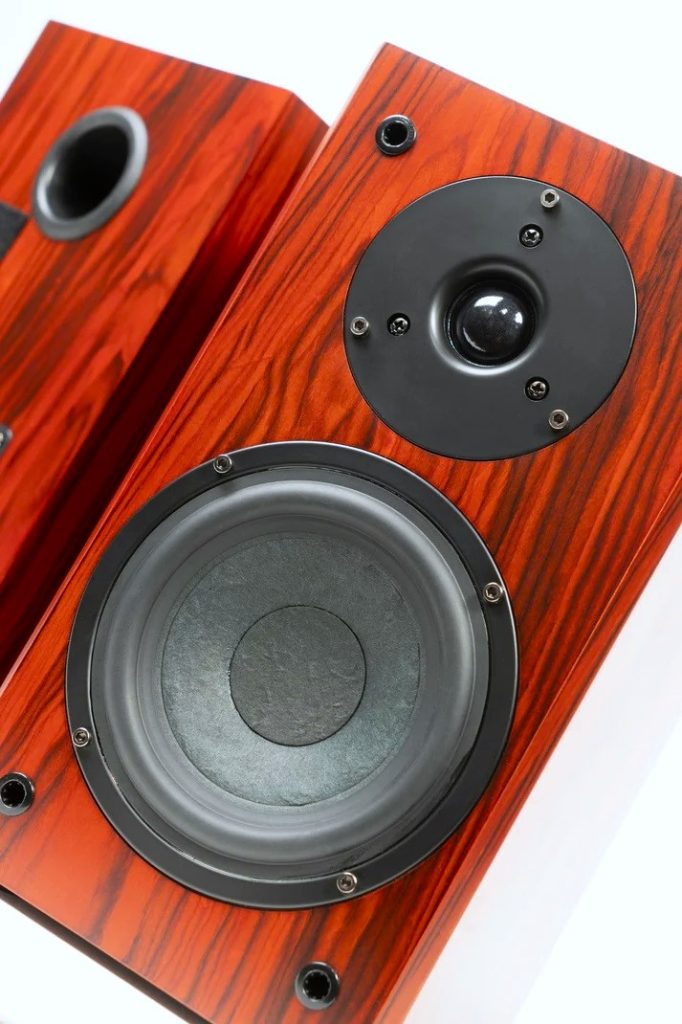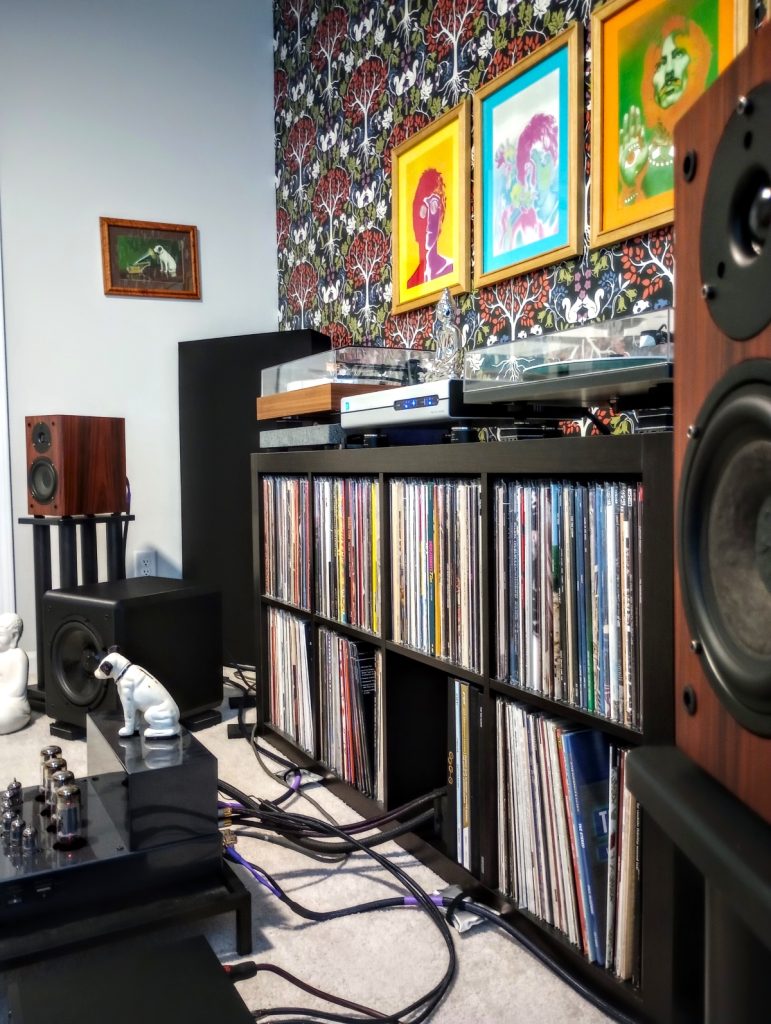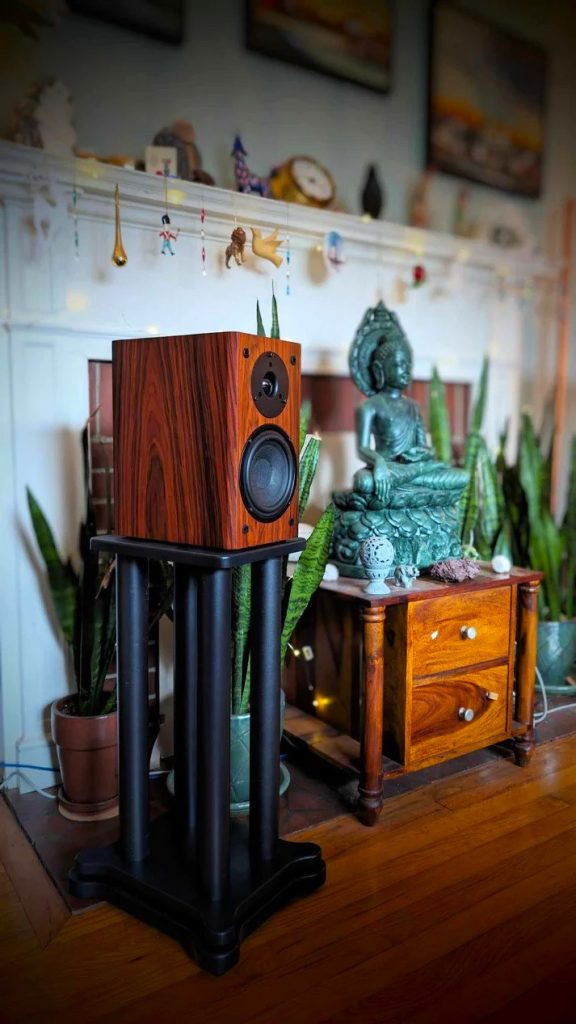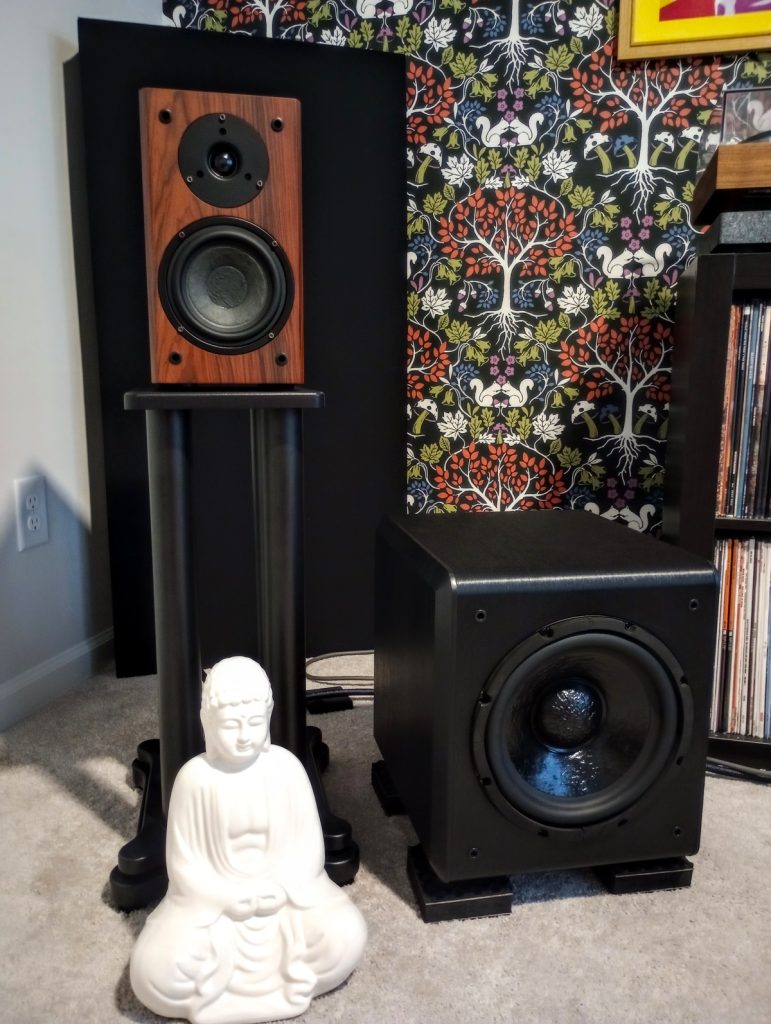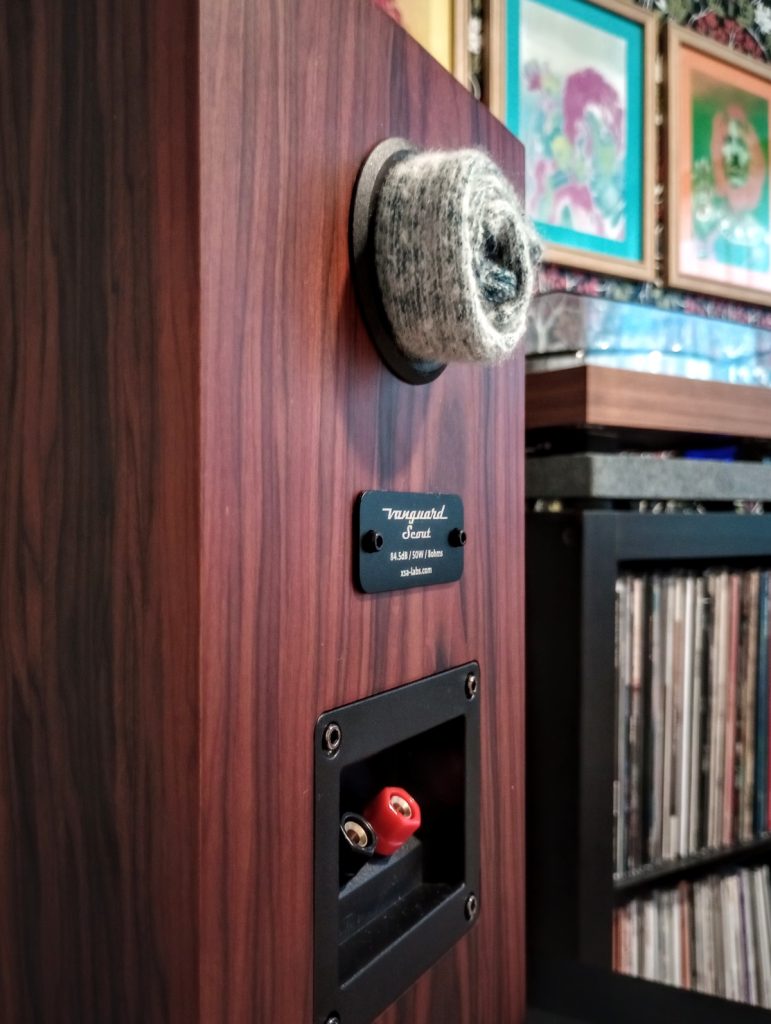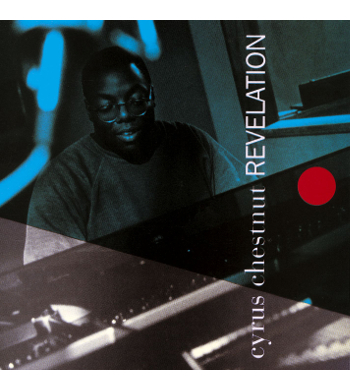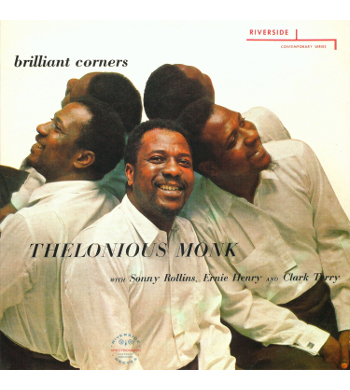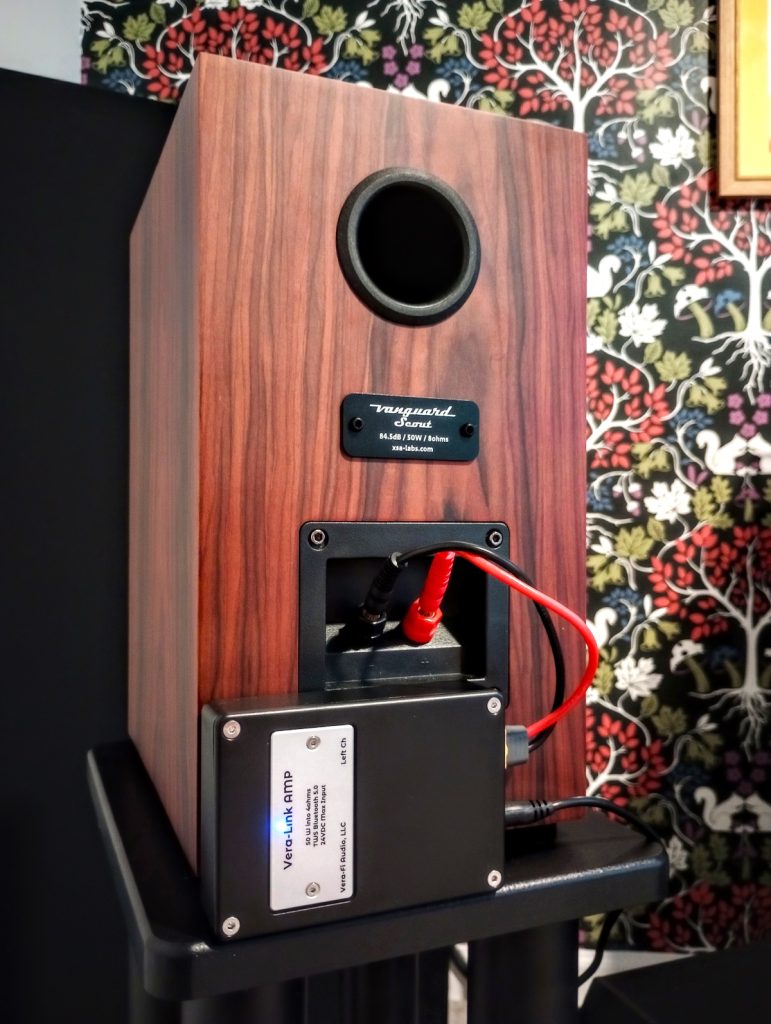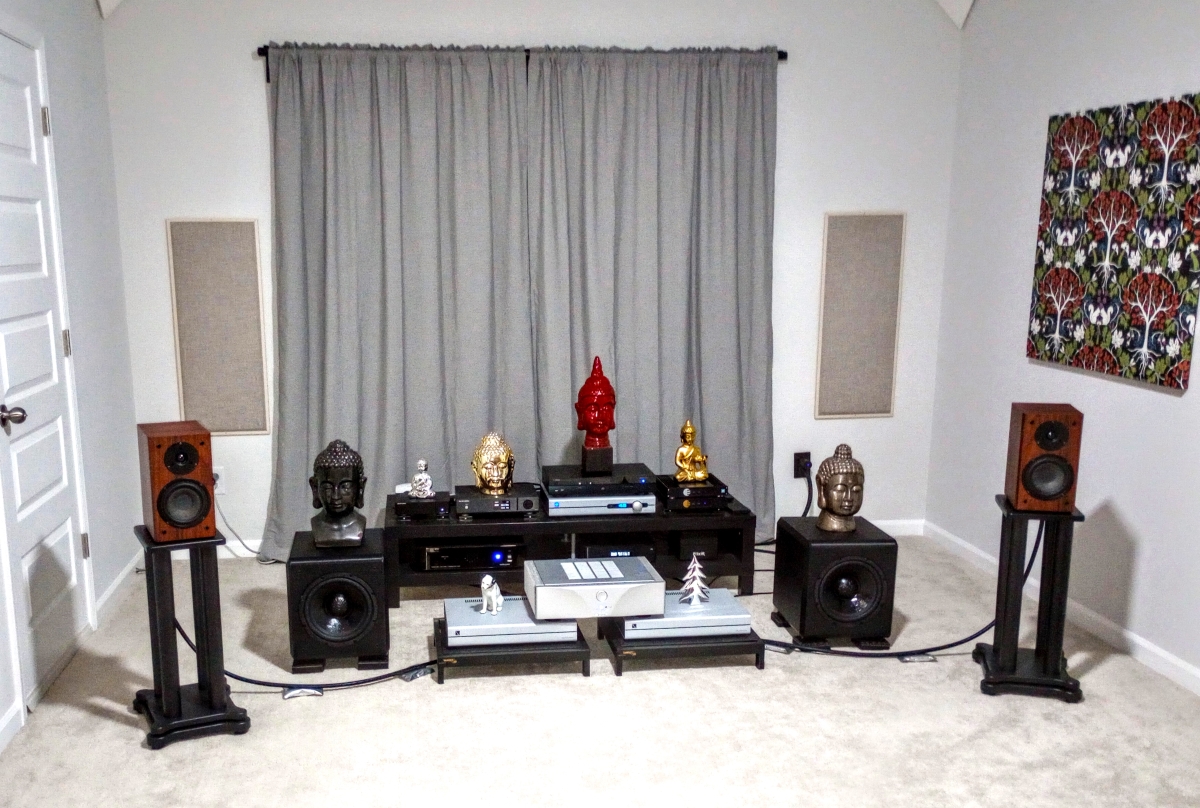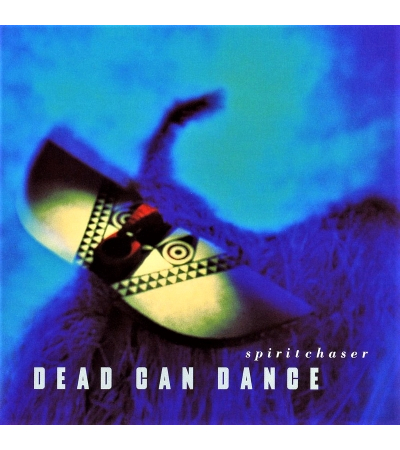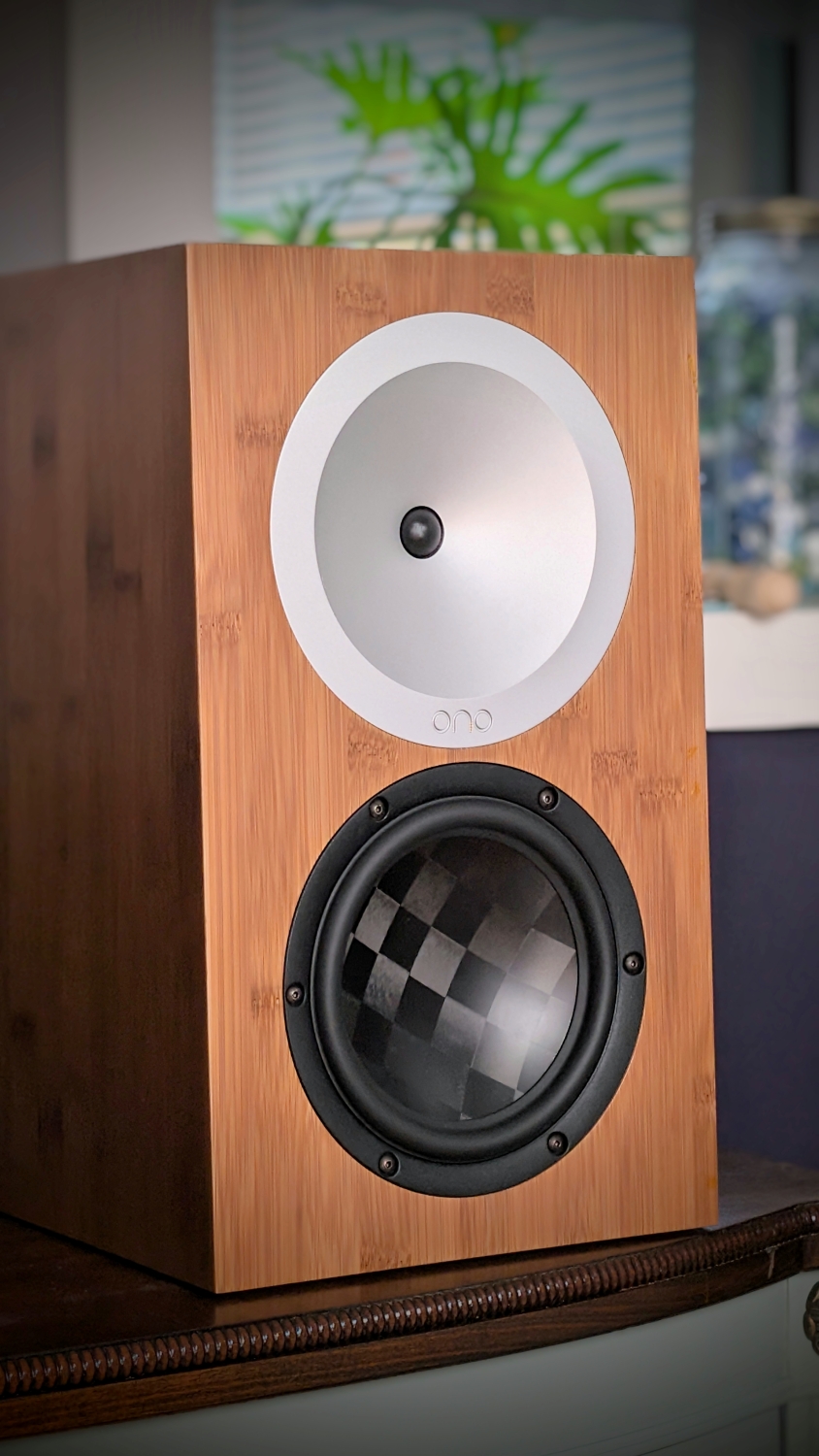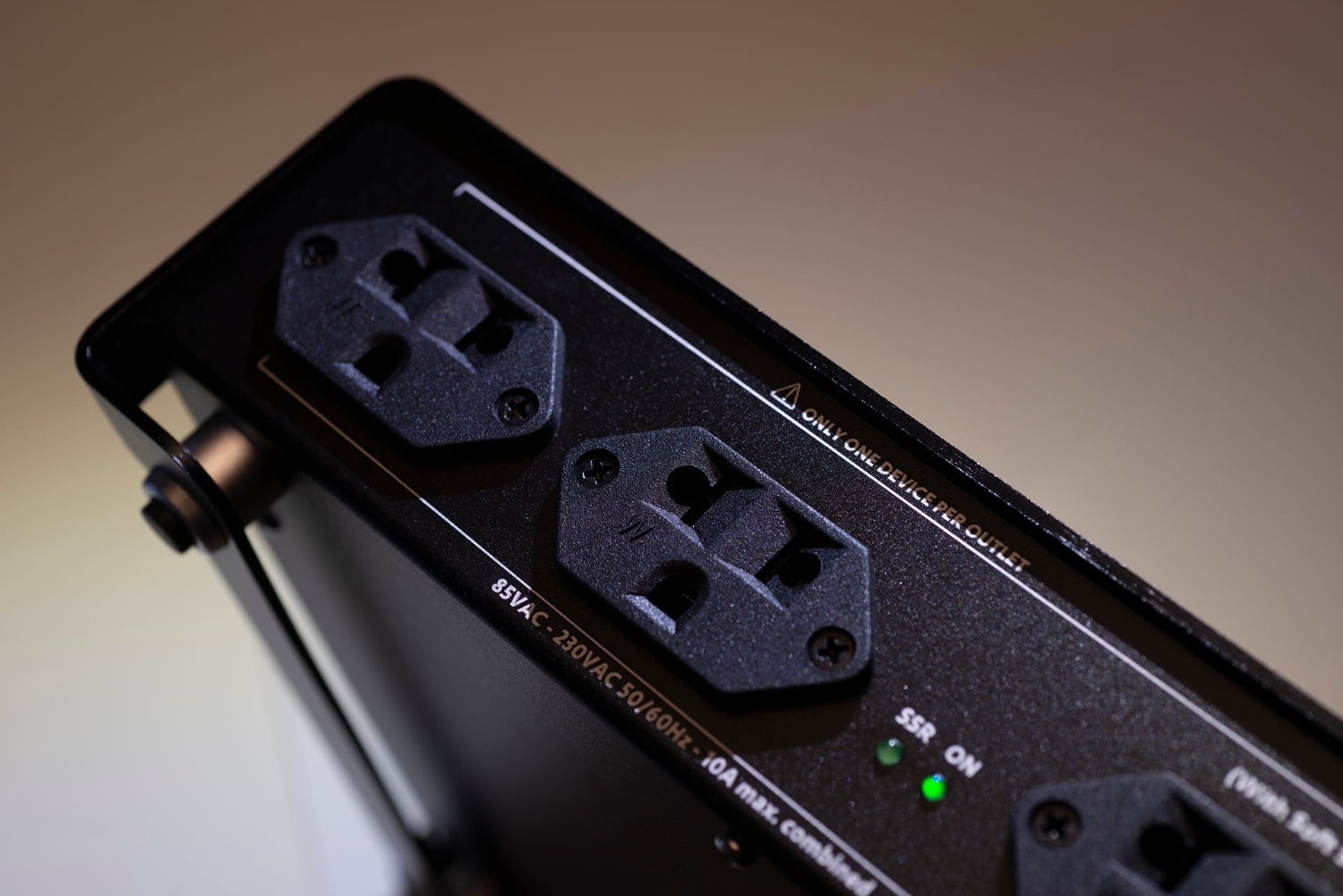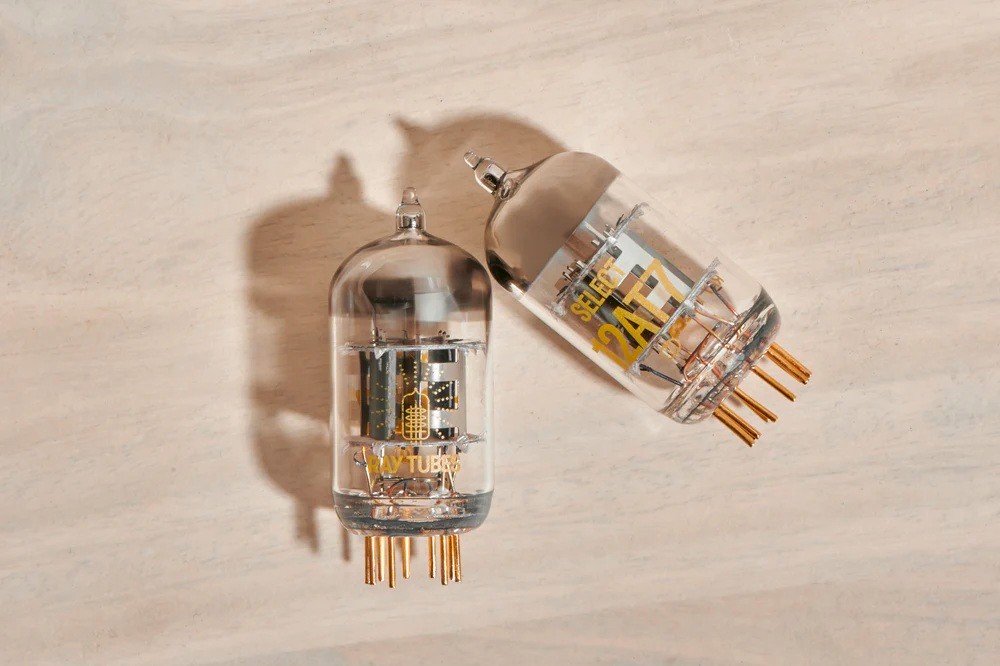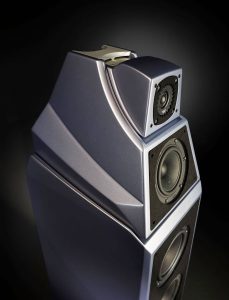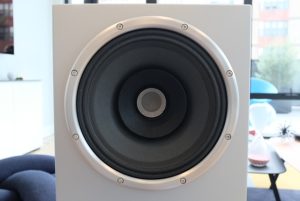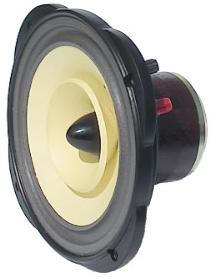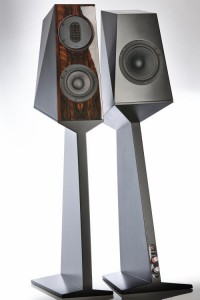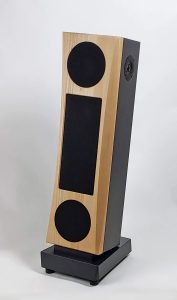I've been reviewing a ton of LPs over the last few years, and to enhance my review process, I set up a dedicated, all-analog system in one of my audio rooms. That system features dual turntables from ProJect and Rega, a PS Audio Stellar phono preamp, a PrimaLuna tube integrated amp, and a pair of new production KLH Model Five loudspeakers. It's a modern system that has a very vintage vibe with the tables and tubes, and especially the retro-cool looking Model Five loudspeakers. Their mahogany-veneered cabinets, linen grilles, and custom metal risers give them a very Mid-Century Modern aesthetic. Along with those classic good looks, the drivers and crossovers of the Model Five were completely redesigned to offer an elevated level of performance over Henry Kloss' originals.
That said, I'd been gaining an awareness that perhaps the KLH Model Five loudspeakers are not the best match for my room. And regardless of how many things they happen to do perfectly, there are a couple of performance-related issues that have bothered me of late. I'm growing less enchanted with the treble presentation of the aluminum dome tweeters, which—even with tube amplification—often seem a tad metallic. And even though the Model Five is a sealed-box, acoustic suspension design, its ten inch woofer sometimes energizes the room excessively. Having heard countless excellent compact monitor designs at recent audio shows, for about a year now, I'd been seriously thinking about trying smaller-format loudspeakers in the system. If for no other reason, just to satisfy my curiosity as to whether a pair might perform more harmoniously in my analog setup.
Vera-Fi Audio Again Enters the Picture
I've worked with Mark Schifter of Vera-Fi Audio LLC lately on a number of recent projects, all of which perform at levels far beyond their consistently low price class. My experience with Mark's work goes all the way back to the Audio Alchemy days, where his inexpensive but effective devices added significantly to my audio system's level of performance. He couldn't have chosen a more appropriate name for that venture than Audio Alchemy, and it's only recently become apparent to me that Mark and his team of brilliant designers are true wizards! I recently evaluated his Vanguard Caldera 10 subwoofer, and it's an astonishing performer for $199—you can read my full review of the Caldera 10 HERE. I know I've said this with regularity over the last six months or so, but how Mark Schifter and Vera-Fi Audio can build equipment with such high-end pretensions and the superb level of fit and finish at this price point simply boggles me.
Mark and I seem to be in contact with each other on an almost daily basis, and whether through our shared social media accounts or through emails and phone calls, we touch base often about Vera-Fi's current product lineup and upcoming product introductions. I'd gotten the impression more than once that he might be interested in sending me a pair of his new $299 Vanguard Scout loudspeakers for review; they're a compact monitor-type design that can be used for either desktop or bookshelf implementations. When Mark offered a pair for evaluation, I told him about my plans for using the Scout in my analog room, and he even offered to send a set of dedicated stands that Vera-Fi had built for just such purposes. I have a fairly nice, older set of Lovan all-metal stands on hand, but for the sake of synergy, I chose to have him send the custom stands. The Scout pair and stands arrived very quickly via UPS second day service.
The Vanguard Scout Loudspeakers Arrive
Upon arrival, I was again surprised by the heft of the individual boxes for both the stands and Scout loudspeakers, which were way heavier than I would have expected! The first order of business was assembling the stands, which featured tubular steel columns and heavy MDF bases and platforms that are coated with a marbled black vinyl finish. The assembly instructions were of the pictograph variety, and didn't exactly match the appearance of the actual stands, but the basics of the assembly process was close enough that I was able to successfully get them together. The assembled stands are quite handsome, and are surprisingly rigid and substantial, even though the floor spikes pictured in the instructions were conspicuously absent. Instead, pre-attached, heavy rubber footers were included, which worked perfectly, although I later added low-profile tiptoes to help couple them to the floor. The package also included self-adhesive, thick foamed dots to provide protection for the loudspeakers sitting on the stands. So far, color me impressed!
Opening the box that contained the Vanguard Scout loudspeakers offered a much greater surprise: these are among the most beautiful compact monitor speakers I've ever seen! And they feature the kind of fit and finish that, for me at least, elevates them to a level on par with much more expensive loudspeakers—especially considering the price point. The cabinets are veneered on all sides with real rosewood; Mark tells me that he's been working with the company that builds them for twenty years now, and the exacting level of woodworking detail on the Vanguard Scout is breathtaking. All corners on the cabinet are mitered with a level of perfection you'd expect from a pair of loudspeakers that retail for many multiples of the Scout's low price. I'm guessing the cabinet maker employs CNC machining; the cutouts for the drivers on the front panel are perfectly precise; the same applies to the rear panel cutouts for the port and binding post panel. The silk dome high frequency driver and treated paper cone woofer look as though they were sourced from premium providers; everything's secured with heavy, hex-type screws, and the driver housings and baskets are perfectly flush with the veneered surfaces. The rear panel sports a stylized metal placket that features the distinctive Vanguard Scout logo, basic specification information, and also features a web address, xsa-labs.com. The attractive grilles are precisely fitted to the cabinets; on looks alone, the Vanguard Scout can compete with almost anything out there!
The Vanguard Scout was designed by Mark Schifter's partner in crime, Viet Nguyen, and is a 2-way, bass reflex ported speaker with a 5.25 inch treated paper cone woofer and a one inch silk dome tweeter. Viet's crossover design features an asymmetric topology, is voiced to provide pinpoint imaging and a wide soundstage, and uses high-quality custom inductors and film capacitors of the type typically seen on speakers that retail for ten-times that of the Scout. The Scout has an efficiency rating of 84.5 dB/watt, is rated for 50-watts RMS, and presents an 8 ohm impedance load to your amplifier. The Scout features a -6dB downpoint at 60Hz, which is pretty astonishing low bass for such a small enclosure. Each speaker measures approximately 12 inches tall, 6.625 inches wide, and 10 inches deep (that dimension includes the removable grille), and each weighs approximately 12 lbs, but they exude a serious heft that makes them seem much more substantial. In position and with the Scout placed on the custom stand, each tops 25 lbs. total, and the combination is nicely rigid.
The crossover components used in the Vanguard Scout loudspeakers show the commitment to quality from Mark and Viet in their design, and contribute significantly to their superb sound!
I mentioned that the Scout's rear placket featured a web address for XSA Labs, which I didn't know is a partner company of Vera-Fi Audio—both companies are co-owned by Mark Schifter and Viet Nguyen. And, as it turns out, Viet Nguyen designed the LSA Signature 60 loudspeaker for Underwood HiFi and Wally Liederman that I absolutely raved about last year—you can read that review HERE. The Signature 60 was an astonishingly good loudspeaker at its then $799 introductory price point—how could I not have known about the connection between Vera-Fi Audio and XSA Labs? Viet designed basically the entire LSA Signature line, so at least design-wise, when it comes to the Vanguard Scout, the apple doesn't fall too far from the tree! That explains a whole lot of the Scout's goodness in terms of its excellent design and quality of construction.
Setup and Listening Results
You can click on my name in the header above and see the complete contents of my two audio systems. For much of the review process, I used my all analog, mostly tubed system, where the Vanguard Scout loudspeakers are intended to reside. My intent is to use them during my frequent evaluations of new LPs and classic album reissues. First, I moved the KLH Model Five pair out of the way, and got the Scout pair positioned properly in the room on their stands, where I have the drivers centered about three feet into the room from the rear wall, and about two feet from the side walls. That provided the best imaging and overall tonal presentation; these small guys have a surprising level of deep bass that energized my room to the point of almost overpowering it! To properly position them in my room, I listened to mostly mono recordings; it's always been my practice that if you can get the mono sounding perfectly centered, the stereo imaging will also be spot-on. While I generally employ only a slight amount of toe-in with dynamic, box-type loudspeakers, in this instance, having the tweeters aimed almost directly at my ears proved to be correct. The Scout pair was connected to my PrimaLuna EVO 300 tube integrated with a pair of Audio Art Cable Copper Cryo OCC speaker cables; the connecting cables cost more than double that of the loudspeakers!
A rolled-up piece of heavy wool from my wife's studio closet was perfect for plugging the port and turning the Vanguard Scout into an acoustic suspension loudspeaker!
Mark Schifter suggested that if needed, I could plug the bass ports, which would essentially make the Scout a sealed box for better integration with a sub. Never having plugged bass ports prior to this experience, I had to look it up on the internet! I didn't have any foam handy that I could possibly use, but I saw several posts that insisted any kind of wool material stuffed into the port would work perfectly. My wife, Beth, is a textile artist; she works in wools, which she custom dyes for the various wall hangings and tapestries she creates, and has a huge closet full of wool. I scarfed enough to roll up tightly and completely plug the Scout's rear ports, and that yielded a great improvement in the loudspeaker's response in my smallish room. That gave me the midrange and treble presentation I was looking for, and the bass, while somewhat reduced, was more tightly controlled.
Even with the improvements from plugging the ports, the treble was still harsh right out of the box, and I correctly sussed that they'd need some break-in to really sing. Mark had told me in advance that it would probably take a minimum of fifty hours for a baseline break-in, and they'd only get better beyond that mark. Despite the treble harshness, they seem to be responding to the PrimaLuna tube amplification well, and no clipping occurred even during demanding passages. The Scout is fairly inefficient at 84.5 dB/watt, but the EL 34-based PrimaLuna (42-wpc in Ultralinear mode) still seems to be a good match with the Scout attached to the 8 ohm taps. The Scout produces a scale of sound and stereo image that's quite large considering their diminutive size. After getting them into position, I also connected my Yamaha BD-A1060 universal player to assist with the burn-in process. I then loaded the compact disc of Jim Anderson's recording of Cyrus Chestnut's Revelations and set it to repeat play. It's a great jazz album that's very naturally recorded, and is one of my references for well-recorded acoustic bass. The Scout loudspeakers had arrived very late in the day; I came back four hours later around midnight to take another listen, and to my surprise, they sounded absolutely horrible! The treble was just grating—I shut the PrimaLuna amp down; it was late, and I crashed out disappointed that the Scout might not live up to my expectations after all.
Next morning, I fired everything up and took another listen, and surprisingly, the sound was greatly improved from just eight hours ago, without further break-in! I put on Impex Records 24K gold CD of Jennifer Warnes' The Hunter, and the treble response displayed by the Scout pair was remarkably more even and liquid. Buoyed by this, I again set the player to repeat and left for about six hours. Upon my return, I noticed further incremental improvements in the overall sound; I then put on the SACD of Glenn Gould's Goldberg Variations and let it play for the remainder of the evening. My grandson Henry came for an overnight visit, so no further critical listening occurred that evening.
The next morning, I put on the SACD of Thelonious Monk's Brilliant Corners, and again, the improvement in the sound I was hearing was markedly better. However, the bass content, while more balanced, was now somewhat lacking. At that point, I moved the Vanguard Caldera 10 sub into the room, determined its correct position, and got the sub's output level balanced with the Scout pair. I then switched the sub off, set the disc player to repeat, and left the room for about another six hours. Upon my return, I switched on the sub, and WOW! The skies parted and the angels started singing—and this is after only about 24 hours of continuous play. Monk's Brilliant Corners sounded even more cohesive than it ever did on the big system, and the musical presentation benefited greatly from the seamless integration of the Vanguard Scout loudspeakers with the Caldera 10 subwoofer.
Impressions Following Break-in and Final Setup
I then started playing just about everything that I typically use to acid test loudspeakers—including Impex's SACD of Patricia Barber's Clique!, which has some of the most naturally recorded and dynamic bass, piano, and drums of any album I know. A really great example is the classic track "The In Crowd," where the acoustic bass intro can present a challenge to many loudspeakers—and it replayed effortlessly over the Scouts. Again, thank you, PB and Jim Anderson for gifting us with such an amazing recording! Also courtesy of Impex Records, the 24K gold CD of Jennifer Warnes' Famous Blue Raincoat, where songs like "First We Take Manhattan" and "Bird On A Wire" were rendered with impressive dynamics and a ridiculously liquid midrange and treble. More jazz, prog, classical, vocals—you name it, and the sound quality was almost otherworldly! I told Beth I was simply heading upstairs to shut the system down, and hours later, I was still there!
Mark Schifter, if I ever doubted you, my sincerest apologies—I know you told me 50 hours for break-in, but I feel like we're 90 percent there at the halfway point! Gobsmacked is the understatement of the year, but I then moved on to LP playback, where I could duplicate the titles above from Patricia Barber and Jennifer Warnes (both on Impex), and again, the sound was to die for. I'd just gotten the Impex 1STEP 45 rpm reissue of Stan Getz's Getz/Gilberto; I know this album inside out, and own additional LP, CD, and SACD versions, but the new Impex is definitely the gold standard! Across the Vanguard Scout loudspeakers in tandem with the Caldera 10 sub, the music was rendered with a level of naturalness and realism that flabbergasted me; when Joao Gilberto and his wife Astrud sing on "The Girl From Ipanema," they're presented with a scale of sound that has you feeling like they're right there in the room with you. And Stan Getz's iconic sax turn on this tune is more mellifluous and present than I ever recall hearing it.
While my primary interest in this evaluation was to gauge the Scout's performance in my all analog room, I still had the Vera-Fi Audio Vera-Link Bluetooth amplifiers on hand. And decided to attach those micro wonders to the Scout loudspeakers to check out their capabilities in this arrangement (the combination is also being offered as a package on Vera-Fi's website). I reviewed the Vera-Links last year; you can check out my review HERE, and if you happened to read that review, you know that the Vera-Links were capable of driving my Magneplanar LRS+ loudspeakers to near reference levels with a surprising degree of musicality. For this part of the evaluation, I disconnected the Caldera 10 sub, and removed the wool plugs from the rear ports of the Scout. I used my Android tablet to stream Qobuz in high resolution to the Vera-Links, and the sound quality was superb, working perfectly for my needs here. The Scout/Vera-Link combination would be especially apropos in a desktop arrangement. And with the ports open, the bass response was plenty deep, such that in a desktop setup, you probably wouldn't even miss the subwoofer.
The Vera-Link Bluetooth amplifiers are perfectly matched to the Vanguard Scouts.
Additional Evaluation of the Vanguard Scout loudspeakers
The day after this review went live, I went to the analog room and switched everything on in preparation for further listening to the new Impex Records' Getz/Gilberto 1STEP LP reissue. Of course, that was through the setup with the PrimaLuna EVO 300 tube integrated amp driving the Scouts and a single Caldera 10, as it had been for the last week. I needed to do some additional listening to this excellent new 45 rpm set for my upcoming LP review, but right out of the gate, I was greeted by a hollow, disembodied, almost brittle sound emanating from the Scouts. Very weird; I've had the EVO 300 for exactly four years, and in an average of 10-20 hours per week of usage, I've never experienced so much as a hiccup. I started checking out all the ancillary equipment, then I put on another stereo record, with no change to the sound. Then switched to the mono table setup and put on another record I'm very familiar with, Workin' With The Miles Davis Quintet. It also sounded completely wrong—and that got me thinking that perhaps the problem was with the newish PS Audio Stellar phono preamp. So I changed it out of the system and replaced it with the Musical Surroundings Phonomena II+ phono pre, again with no change to the sound. I suddenly became really worried that perhaps something might have gone very wrong with the Vanguard Scouts. Like maybe I'd overdriven them, so I swapped them out for the KLH Model Five loudspeakers—also with no change to the sound. It now appears that perhaps the problem is with the PrimaLuna amp, which I'm hoping only needs new EL34 power tubes; I'm currently talking with Upscale Audio about what might be going on with the EVO 300.
With all that had transpired, and with the PrimaLuna probably down for a while, I had a light bulb moment, and moved the Vanguard Scouts into the larger digital room, where I then connected them to the $13k Naiu Labs Ella hybrid solid-state stereo power amplifier. Which is rated to output 250 wpc into 8 ohms, 500 wpc into 4 ohms, and 1kw per channel into 2 ohms, and has tons of current—it's an absolute beast of an amp that can suffer a dead short without damaging the circuit! I have years of experience running powerful amps into loudspeakers with low power ratings without issue, but I was really kind of nervous attempting to power the $299 Scouts with the Naiu Labs Ella. Even though I use that amp daily in combination with the Magneplanar LRS+, which has a power rating of only 100 watts and an impedance curve that hovers just below 3 ohms, and the Ella has powered them to absolute perfection for over a year now. I had decided early on in the review process that it would probably be ludicrous to even think about trying to play the Scouts in combination with the Ella, but what the heck—what could possibly go wrong—other than blowing apart the woofer cones! I left the Scout's ports stuffed with wool, and having also received a second Vanguard Caldera 10 subwoofer late last week, moved it into place in the room. So with both Scouts and Calderas set up—here goes!
Here's the bad news: there is no bad news! To my absolute astonishment, the Scouts and Calderas filled my room with a level of sound that was very close in nature to what I'm used to hearing from the Magneplanar LRS+. And I barely had to adjust the levels of the twin Caldera 10's—they blended perfectly with the Scouts in the bigger room. At one point, I pulled out my trusty Rat Shack SPL meter, and got in-room readings of 96-98 dB peaks (C-weighted); that's about normal for my listening with the Maggies, though much of the credit for the highish SPLs definitely goes to the twin Caldera 10 subs. I have a playlist set up on my digital music server that features some "acid" tracks that will test the limits of many systems, including tracks from Patricia Barber, Dead Can Dance, Cyrus Chestnut, Jennifer Warnes, The Pineapple Thief, Porcupine Tree, Yello, Kraftwerk, Bebel Gilberto, and Beth Orton. That list also includes music from Shostakovich conducted by Mark Wigglesworth and the Netherlands Radio Philharmonic, which is among the most demanding classical music on my entire digital server. All these tracks either feature complex presentations of massed instruments and voices, extreme dynamic contrasts, and/or subterranean bass. The kind of music that even loudspeakers of a much higher pedigree could potentially have difficulty with.
But the Vanguard Scouts in combination with the Caldera 10's just sailed through these selections without a hitch. And played them with a level of finesse and authority that simply boggled me—especially when I was so completely convinced that connecting them to the Naiu Labs Ella was such a bad idea! If at any point in the review process, I might have felt that perhaps I was being a bit generous in my assessment of the capabilities of the Scouts—particularly when in combination with the Caldera 10's—I now realized that maybe I haven't heaped enough praise on them!
Final Thoughts
While much of the marketing focus on the Vanguard Scout loudspeakers will very likely be their implementation in desktop scenarios, my personal goal was to see if they could do the heavy lifting in a high-end analog system. After sufficient break-in, they passed the test with flying colors, and I'm far beyond impressed by their capabilities—and that extends to their performance in both my digital and analog systems! They blended perfectly with the Caldera 10 subwoofers as used in each room, and offered sound with superb synergy that was also supremely musical. And while I tend to mostly listen at what I refer to as "reference" levels (read that to mean "loud"), the Scout loudspeakers never gave the impression of being under stress or possibly running out of gas. I didn't push them to crazy extreme levels—I didn't play any Metallica, for example—but the typically demanding music I listen to was reproduced without a hiccup. A really great example of an album that has subterranean bass and tremendous transients that will shake the walls (especially with the Vanguard Caldera 10's!) is the Dead Can Dance SACD Spiritchaser. The Scout pair was perfectly integrated with the Calderas and didn't flinch throughout the performance of the tunes "Song of the Stars" and "Indus," which can easily overload many less worthy loudspeakers. And this is sending the signal full-range without a crossover, and only with the bass ports plugged. The Scouts seemed perfectly suited to Spiritchaser via tube amplification, but really came to life with the Naiu Labs Ella hybrid solid state amplifier. And they always presented the music with a level of realism and authenticity that was stunning for such a small-format loudspeaker.
In a recent social media post, I even expressed that I felt the musicality and stellar imaging I was getting from the Vanguard Scout pair was approaching LS3/5A territory. Imagine my surprise when I went to the XSA Labs website a couple of days later, and read a pull quote stating that one of their design goals was to produce loudspeakers that paid homage to classic British monitors—like the LS3/5A—but with a sound that's "bolder and sexier." My first impression after reading this was, Duh—of course!
A respondent to my social media post argued that my review methodology was completely bonkers, and that it was ludicrous to evaluate a $299 loudspeaker with an amplifier that sells for almost $5000! I can't even begin to think what he might have said if he knew I connected the Scouts to an amp that lists for $13k! He felt I was totally missing the point of the Scouts; I told him I wasn't missing the point at all! My point is while the Vanguard Scout loudspeakers and Caldera 10 subwoofers are leaders at their price points—they're also entirely capable of playing very nicely with much more expensive audiophile gear. So perhaps you can start out with an affordable amp, say a pair of the Vera-Fi Audio Vera-Links; they're a good match at $200, and will power the Scouts perfectly. But should you later upgrade to a better amp, they'll perform at a much higher level. Regardless, Mark Schifter and Viet Nguyen have made it possible for everyone to own a world class compact monitor at a crazy low price!
Here's the part I might have considered to be the rub—the Scout only has an efficiency rating of 84.5 dB/watt, which means it's a relatively inefficient loudspeaker. That's not at all unlike any pair of Magneplanars I've ever owned, and I was expecting the Scout to be equally finicky in terms of its amplification needs. So for the absolute ultimate in sound quality, you need an amp that's capable of driving them to satisfactory SPLs with enough watts or high current to really let them sing—regardless of the 50-watt power rating. That means a fairly jacked up receiver or integrated amp, and I'm not 100% certain that your garden variety $100 receiver will have the right stuff to take them to that level of performance. My earliest mistake in my 40+year Magneplanar experience was attempting to drive them with mid-fi receivers and the like. At the point when the light bulb went off and I got a high-wattage, high-current amp, that's when I made the leap from hi-fi enthusiast to audiophile. Having said all that, I didn't find the Scout a particularly difficult load to drive effectively to satisfying levels, regardless of my expectations. Anyway, in today's world, there are a gazillion Class D amps that sound great, aren't too expensive, and have enough watts and current to drive just about anything—including the Scout.
If I had one quibble with the Vanguard Scout's design, the only underwhelming aspect of the entire loudspeaker is the binding post panel, which is understandably at this price point made of plastic. But as with those found on the Caldera 10 subwoofer, it's of a slightly higher caliber than typically would be found on a product at this price, and that's a really negligible complaint on my part. That said, during my evaluation, I never experienced a single moment where I felt any vibrations emanating from the binding post panel assembly, or from the speaker baskets, for that matter. Considering Mark and Viet's perfectionist inclinations with all their products, I wouldn't be surprised if future iterations of the Scout feature a metal panel for the binding posts.
The Vanguard Scout has the potential to be a true world-beater, and if you're willing to give them the necessary break-in time and exercise careful amplifier matching for a high-end system implementation, I think you'll be every bit as impressed as I am. And in my dual systems in tandem with the Caldera 10 subwoofers, which they blended seamlessly with, the combination easily took to task my KLH Model Five loudspeakers ($2500 MSRP)—along with the Magneplanar LRS+ ($1250 MSRP with custom MagnaRiser stands). After the fully broken-in Scout/Caldera combo took the stage, I never felt I was missing anything the Model Fives or possibly the LRS+ brought to the table. The Vanguard Scout's playback has worked so perfectly for me on every level, I'm ready to jettison the more expensive Model Fives—and maybe rethink my love affair with the LRS+. Thank you, Mark Schifter, for the opportunity, and thanks, Viet Nguyen for such an impressive design. Very highly recommended!
Vanguard Scout Loudspeakers
Retail: $299 MSRP
Vera-Fi Audio
All photos courtesy of Vera-Fi and the author




